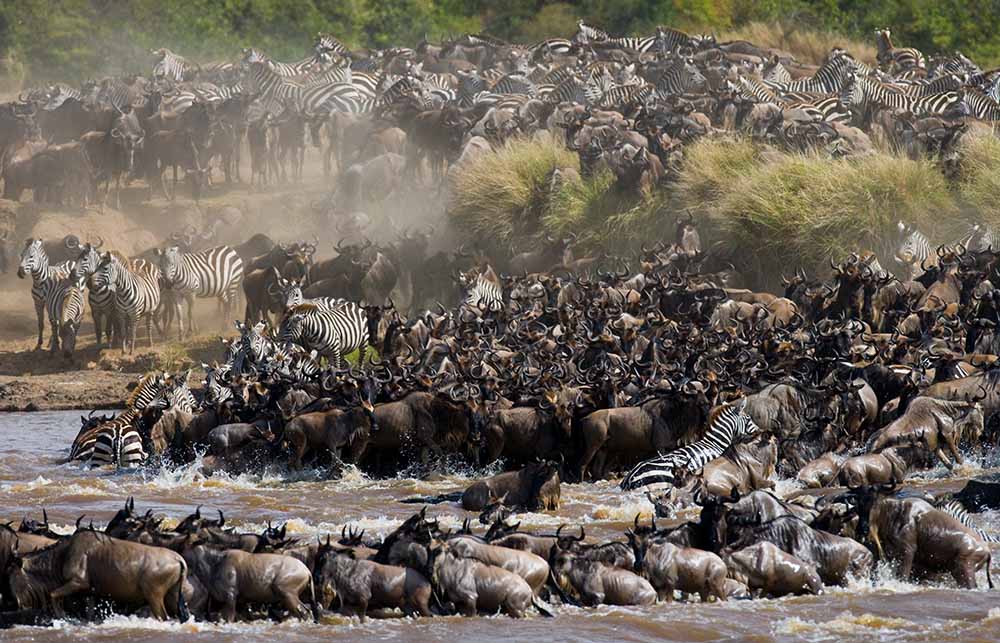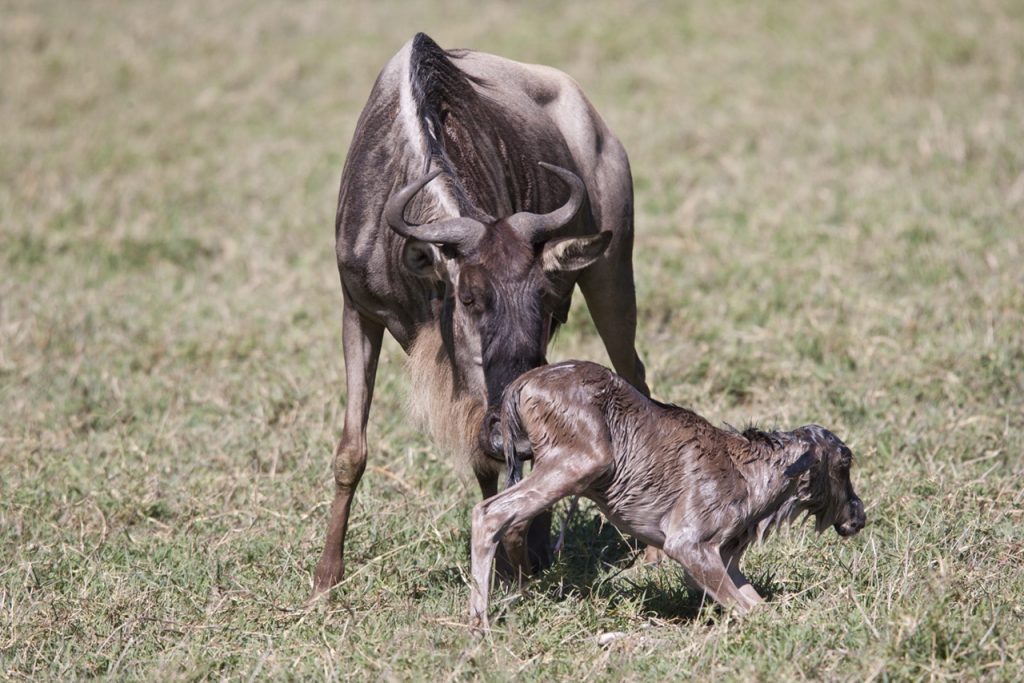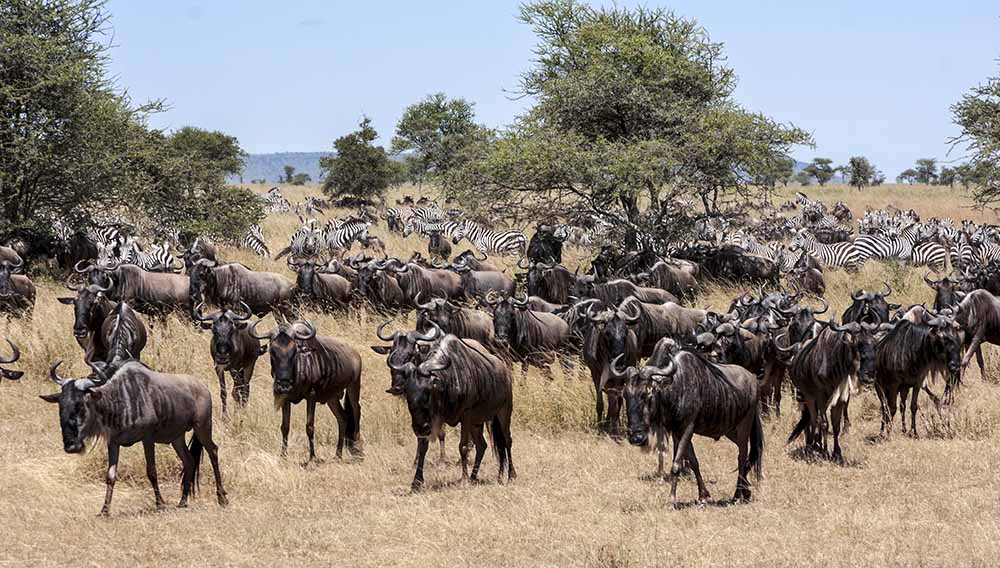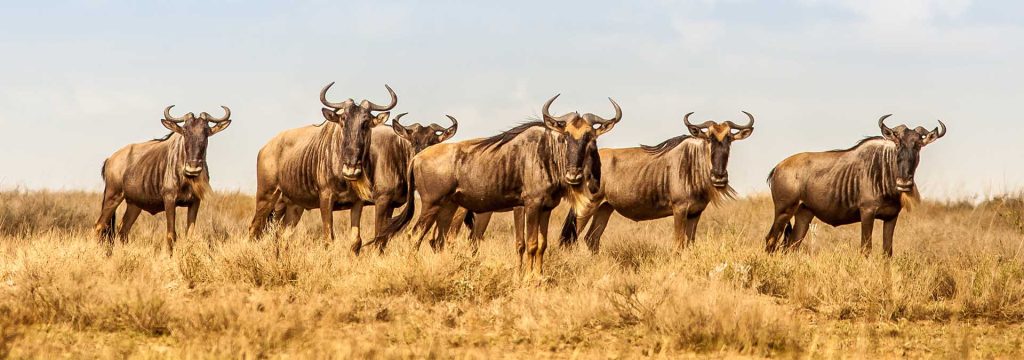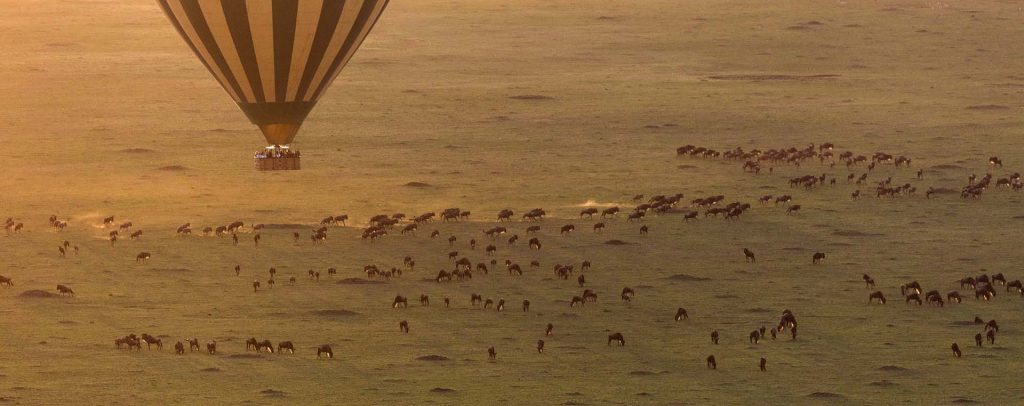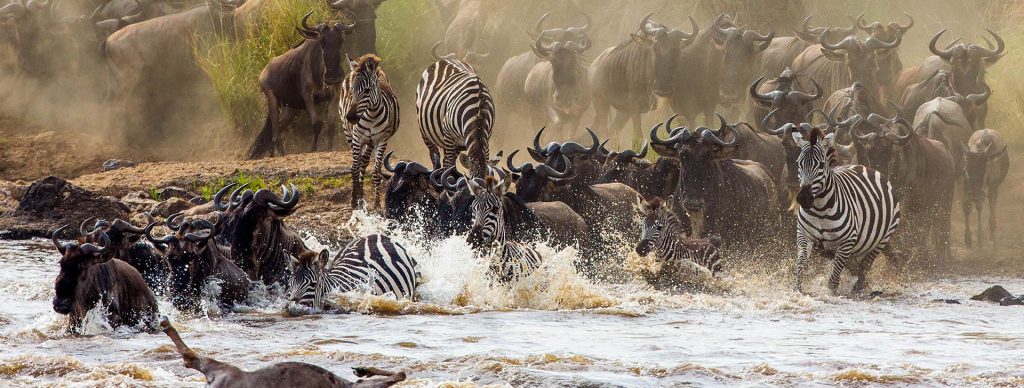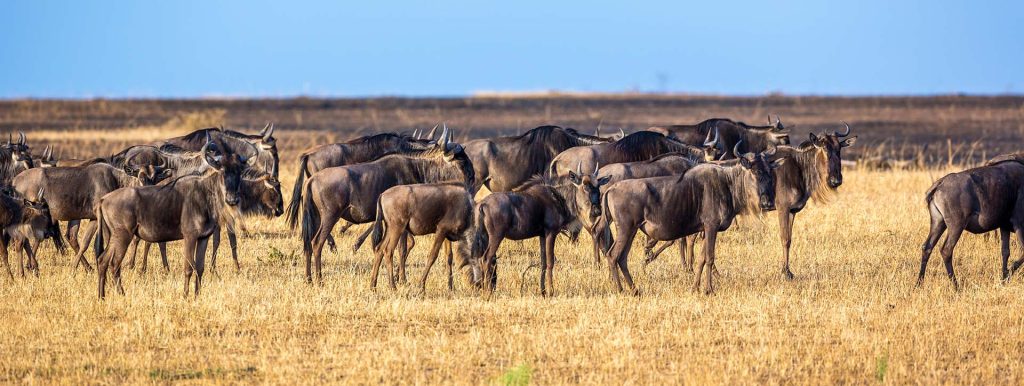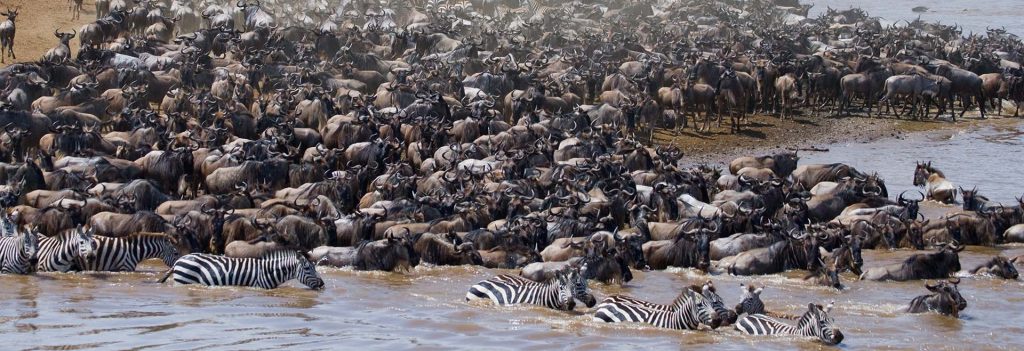Wildebeest Migration Facts to Know Before Booking A Safari
- Predators Hunt Newborns during Calving Season in Serengeti
The calving season usually occurs from February to late March, when about 8 000 wobbly babies are born every day. Because the babies can run as fast as their moms within 48 hours, there are very touching scenes of tiny wildebeest speeding along and of zebras nuzzling their foals.
But be warned: no aspect of the Gnu Migration is for the squeamish. Predators feast on newborns and you’ll likely witness action-packed scenes of calves being run down by cheetah or snatched by lions. The pressure of predators is one of the reasons why nearly half a million wildebeest are born so close together. It’s nature’s numbers game. While many become the prey that sustains lion prides, enough survive to secure the future of the great herds. It may be a well-worn cliché, but the Wildebeest Migration is truly what ‘the circle of life’ is all about.
- Its Perpetual
Most people think that the Migration only takes place between July and October, but that’s not the case. It’s actually a fluid, year-round movement with various but equally exciting events. The popular river crossings usually coincide with safari’s high season (June to October), hence the perception that this is the only time of the year to see the Wildebeest Migration. Although the river crossings are absolutely riveting, they’re only a small part of this epic journey.
To understand this natural phenomenon, you have to ask, ‘Why do wildebeest migrate?’ Well, the Gnu Migration is dictated primarily by the wildebeest’s response to the weather. It’s triggered by East Africa’s rains, and the animals follow their ancient instincts in search of fresh grazing and water. This epic journey takes the wildebeest across the Masai Mara, all the way south into the Serengeti and to the edge of the Ngorongoro Crater, before circling up and around in a clockwise direction. Here’s a month-by-month breakdown:
- The Gnus Don’t Migrate Together in One Big Herd
Yes, about two million wildebeest and zebra follow the rains on a 3 000-kilometre (1 900-mile) journey, but they don’t travel all together all the time. Half of them would starve if they did!
They split into what are known as ‘mega-herds’, which consist of thousands and thousands of individuals travelling on slightly different routes in more or less the same direction. After the rut (mating) season from about April to May, those that did not mate often break away from the others and form their own herds that travel through the central Serengeti. The animals form huge columns – sometimes up to 40 kilometers (25 miles) in length – that can be seen across the plains.
Members of mega-herds can be quite spread out, with the forerunners arriving at a new place sometimes a day or two ahead of the stragglers – kind of an ‘early warning system’ for safari guides.
- It’s Unpredictable
In East Africa, the ‘long rains’ generally soak the ground in April and May, and the Serengeti plains spring to life with masses of sweet, delicious grass. This is the signal for wildebeest and zebra to start moving into the central Serengeti, mowing the abundant tender grass along the way.
Broadly speaking, this is exactly how it works. Except when the rains are late. Or early. Or if it rains again unexpectedly and some (or all) of the herds turn back to feast on the fresh new grass.
By June, the wildebeest and zebra should be in the Central Serengeti and getting ready for the toughest part of their odyssey: river crossings (about June to August). But not even the wildebeest know when they’re going to cross. Some arrive at the rivers and swim over immediately, while others might spend days hanging around grazing. Some even arrive and turn back to where they came from!
- Wildebeest Crossings Are Popular, But Not for the Faint-Hearted
River crossings are considered the highlight of the spectacle: few other sights beat them for sheer drama and adrenalin value. Will crocodiles snatch the courageous gnu that leaps in first? Will the animals be able to scramble up the increasingly treacherous and slippery riverbank? Will weak or injured wildebeest be able to swim across at all?
Popular perception is that the wildebeest are galloping along at top speed and just crash into the water, following a sort of autopilot herd instinct. This isn’t the case at all. Often, a herd will reach the river at a casual, leisurely pace … and then hang out on its banks for days, frustrating the crocs and tourists alike.
Nobody knows how and why they suddenly decide to cross, but some sort of primeval signal is given. The first intrepid pioneers will then scuttle down the often very steep sides and rocky riverbanks. You will naturally be rooting for these brave forerunners, but you’ll likely witness heart-breaking moments too. An animal can often break a hind leg trying to climb a bank or lose its precarious grip and fall back down onto others, injuring them all. This is what makes a wildebeest crossing a true spectacle – the ecstasy and agony of survival, unedited, unfiltered, in raw true life.


